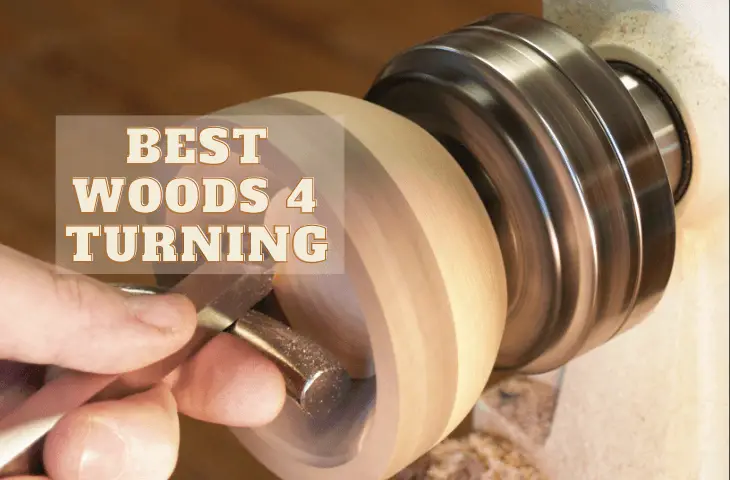A woodturning project requires more than just sharp Turning Tools and a good lathe to be successful. Besides having turning skills, one must know how to choose suitable Woods for Turning for each project.
So, why is the choice of wood important? Different types of wood have different properties. Grain pattern, colour, texture, and workability differ from one wood to the next. Due to these differences, some woods turn better than others.
By the end of this article, you’ll have learned the best woods for turning.
Wood for Turning Overview
Selecting wood for turning is no different from choosing lumber for any woodworking project. Your stock should be free from knots, splits, and checks. Also, blanks to be used for spindle-turning should have straight grains.
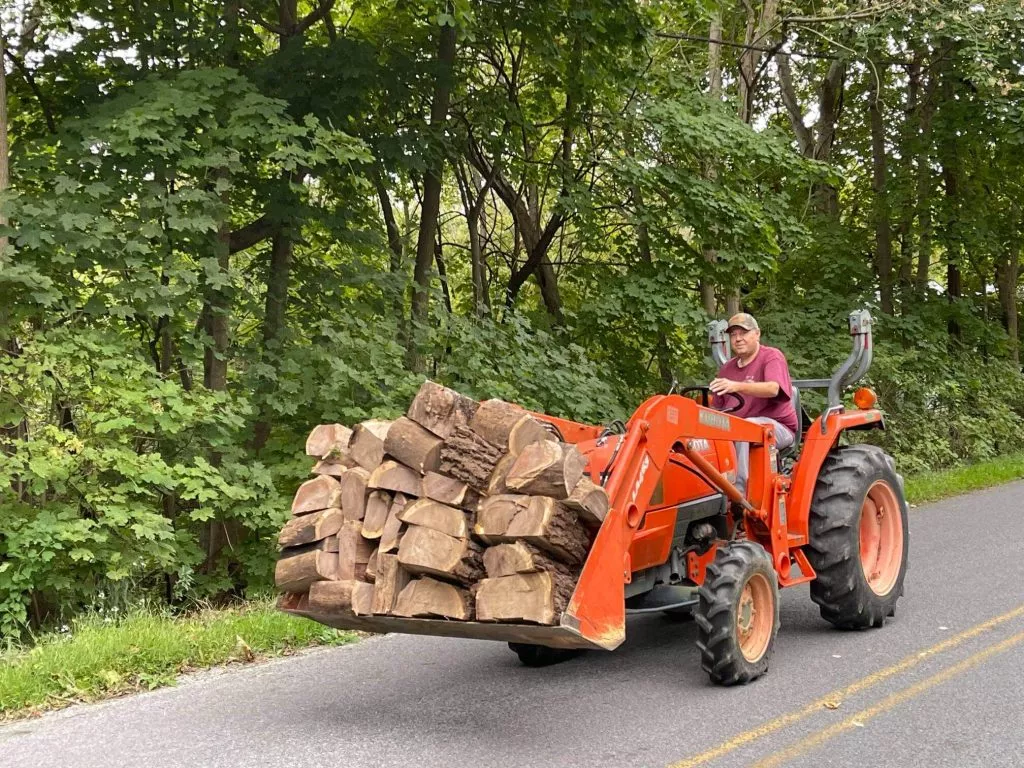
Both hardwoods and softwoods can be used for turning. However, hardwoods are more popular since they can render sharp details. They are used to make a variety of items, from breadboards to bowls and vessels.
Softwoods are mainly used on spindle-turned items such as egg cups, furniture legs, and lamps. They are non-porous and thus suitable for making goblets too.
It is recommendable to turn wood that has been air-dried or kiln-dried to a moisture content of 8 to 10%. However, one can use greenwoods too. The advantages of using greenwoods include the following;
- They are soft and hence turn well.
- It contains moisture that acts as a cooling agent when turning
- They are safer to use since they don’t generate dust. (The dust generated by dry wood clogs machinery and can result in respiratory problems).
The drawback of using greenwood is that it shrinks more. But you can address this problem using an end sealer to prevent excessive checking.
With that said, here are the best woods for turning.
Best Woods for Turning
The best hardwoods for turning are Sheoak, Ash, African Blackwood, Beech, Laburnum, Sycamore, Holly, and Fruitwoods. The best softwoods for turning are Yew and Cedar.
This article will evaluate these woods’ durability, workability, and strength. Analyzing these qualities will help you choose the wood that best suits your needs.
Ash
Ash is very durable; it’s one of the hardwoods resistant to shock. It has a well-defined grain pattern and turns well on the lathe.

Ash works well with hand and powered tools. It also glues and finishes nicely. It is mainly used to make baseball bats and handles for tools such as hammers and shovels. It’s also used to make salad and fruit bowls.
Ash is among the least expensive hardwoods. For these reasons, ash tops the list of best woods for turning.
Sheoak
Like Ash, Sheoak is very durable too. It is resistant to borers and has a low shrinkage percentage.
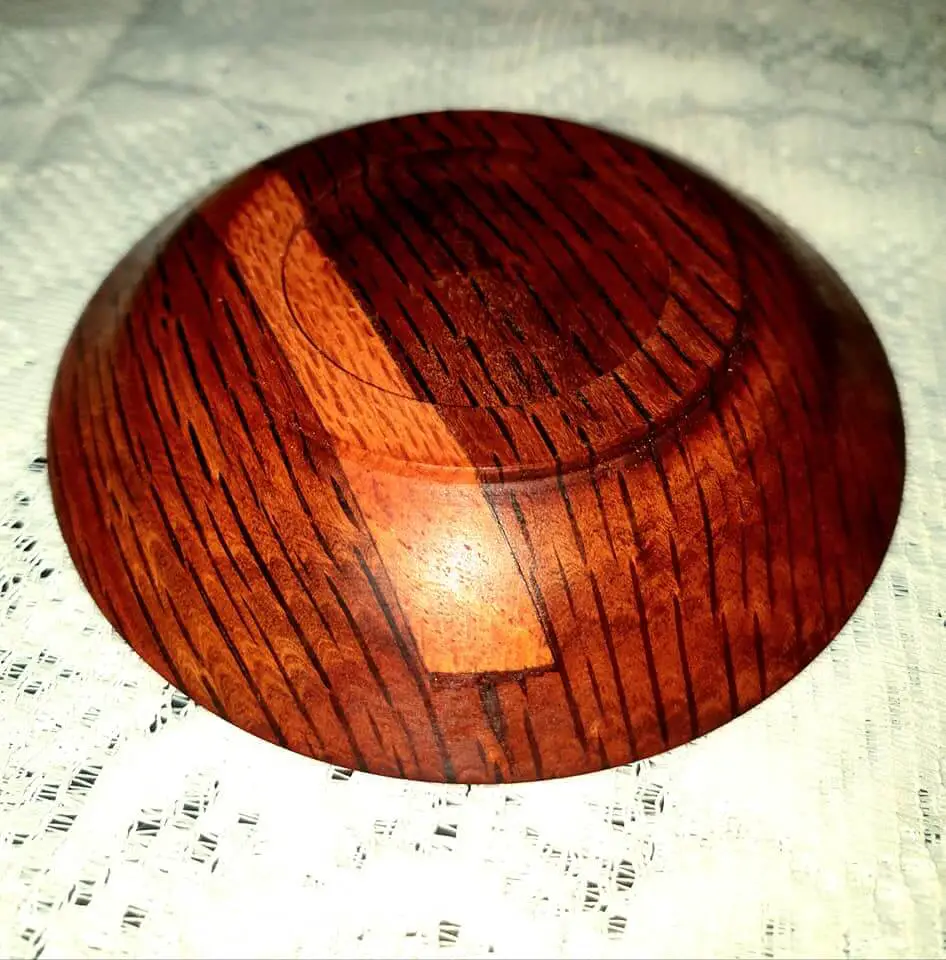
Its creamy sapwood and dark red-brown heartwood make Sheoak look beautiful. Its grains are straight with medium to fine texture. Additionally, Sheoak has a moderate natural lustre.
Sheoak has good workability; it turns, glues, and finishes nicely. It’s mainly used for making decorative boxes and bowls.
Beech
As a hardwood, beech is quite durable. It is also very hard, which makes it ideal for making cutting boards.
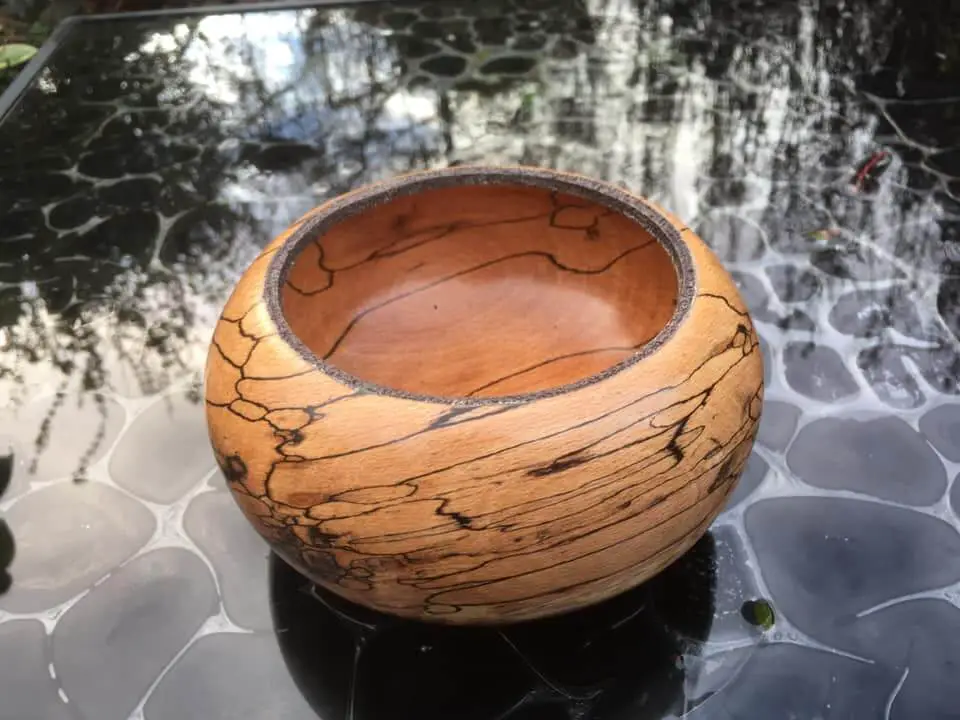
Beech has straight grains with an even texture. It works well with hand and machine tools and turns pretty well. This wood is suitable for making food containers since it doesn’t impart flavour or smell.
Laburnum
Laburnum is known for its high density and hardness. It’s a colourful hardwood whose end-grain slices are used for making decorative patterns such as the oyster veneer.
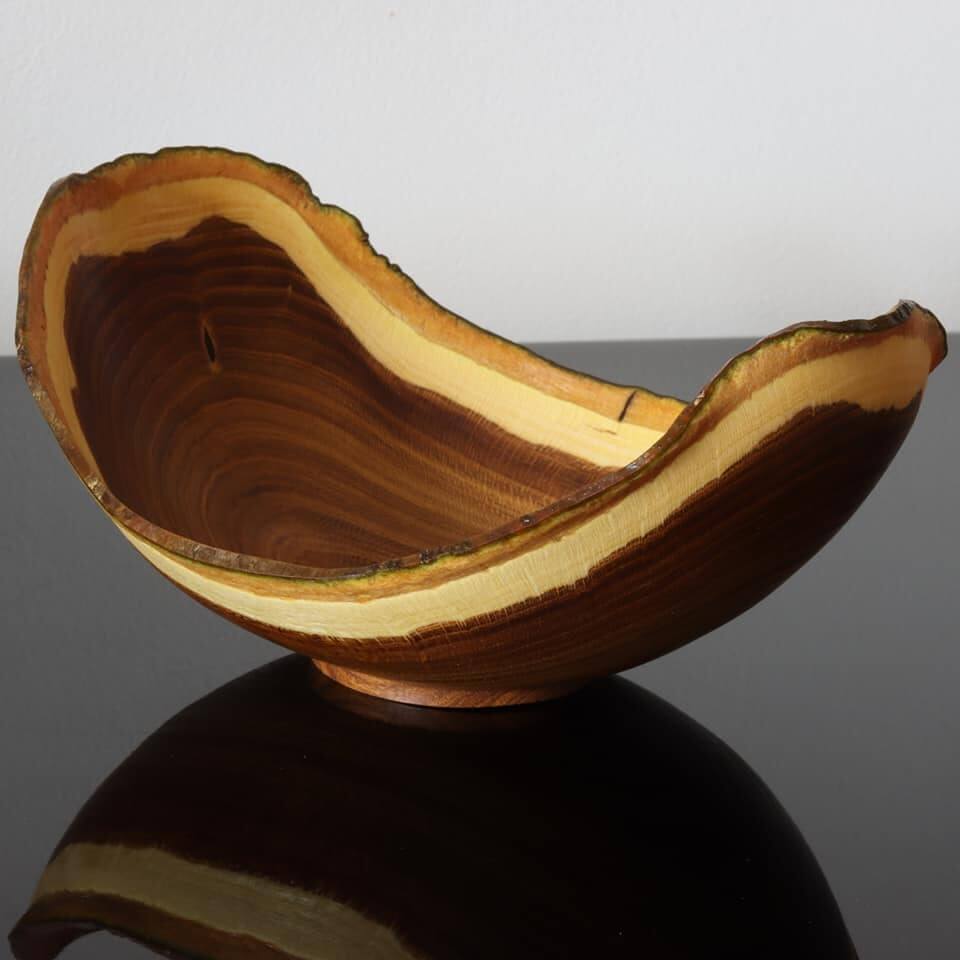
It has straight grains, an even texture, and a good natural lustre. Even though laburnum is hard, it has excellent workability. It also turns out nicely.
African Blackwood
Exotic woods are popular with many turners because of their durability. If properly maintained, they can last for over 100 years. Additionally, they tend to maintain their natural colour longer than other woods.
The African Blackwood has straight grains, even texture, and a good natural lustre. It holds threads and other intricate details pretty well.
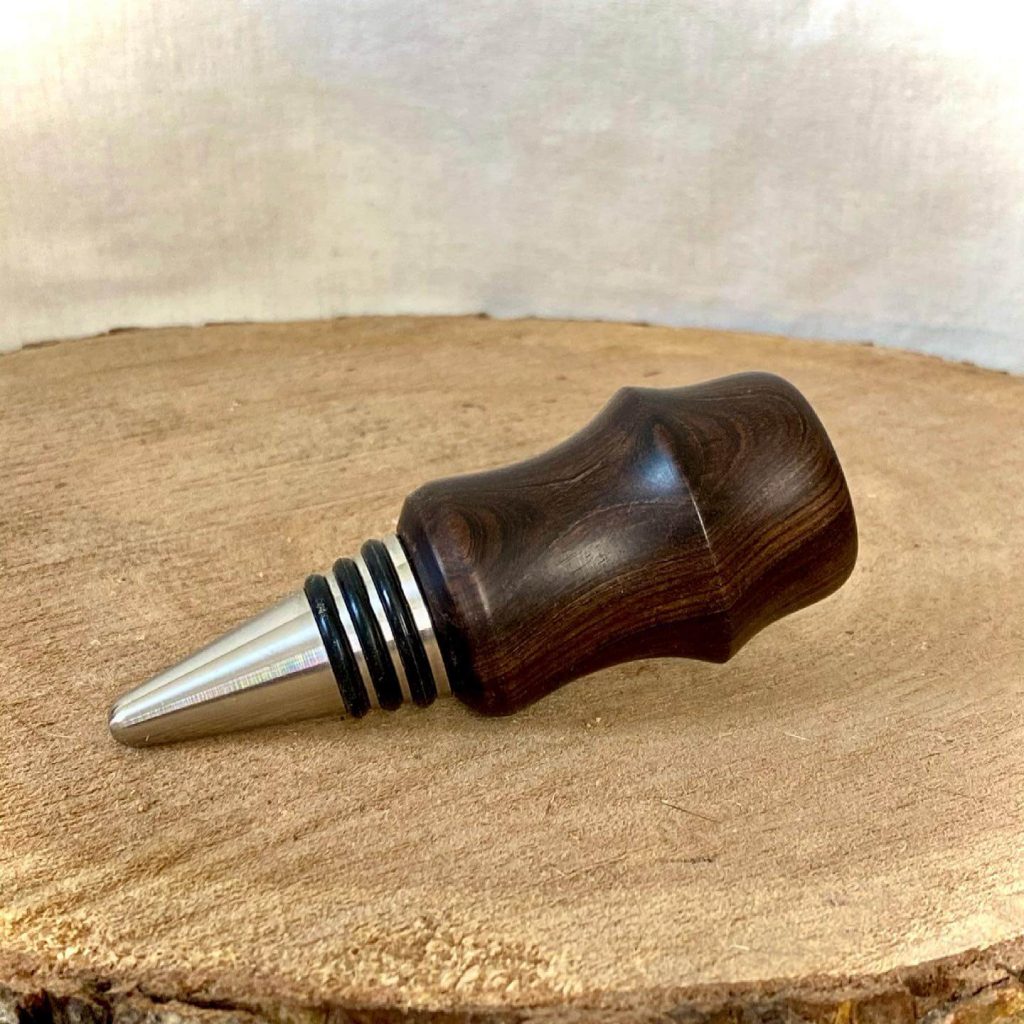
The African Blackwood, however, has one drawback; its workability. This wood has poor workability with hand and machine tools. It’s known for having a blunting effect on cutters.
Cedar
Cedars are among the most durable softwoods. It’s naturally resistant to decay and insect infestation. It also withstands outdoor weather well.
This wood turns nicely, but its soft nature makes it dents and split easily. It has excellent workability and finishes very well.
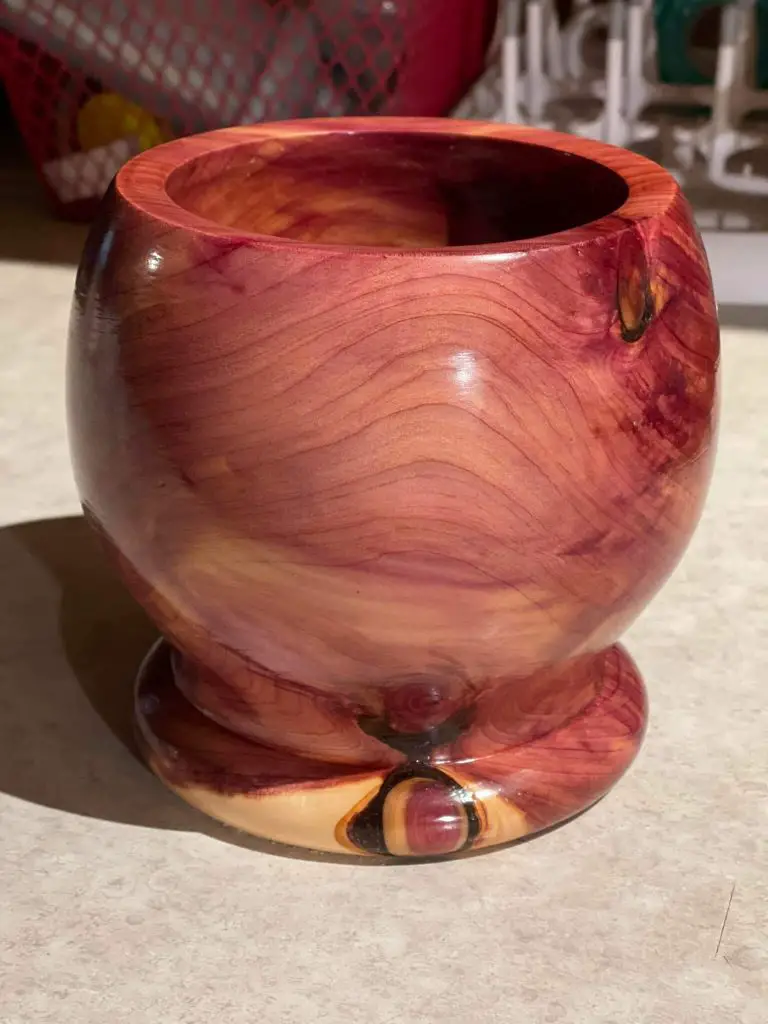
The dust produced when turning western red cedar contains an allergen called plicatic acid, resulting in serious health issues when inhaled. It also tends to clog machines. Thus, if you choose cedar for your turning project, ensure your mask is on. Also, ensure that your workshop has a suitable air filtration device and a dust collection system.
Sycamore
Sycamore may not be as hard as other hardwoods, but it’s harder than most softwoods. Its durability is lower since it’s susceptible to insect infestation and rot.
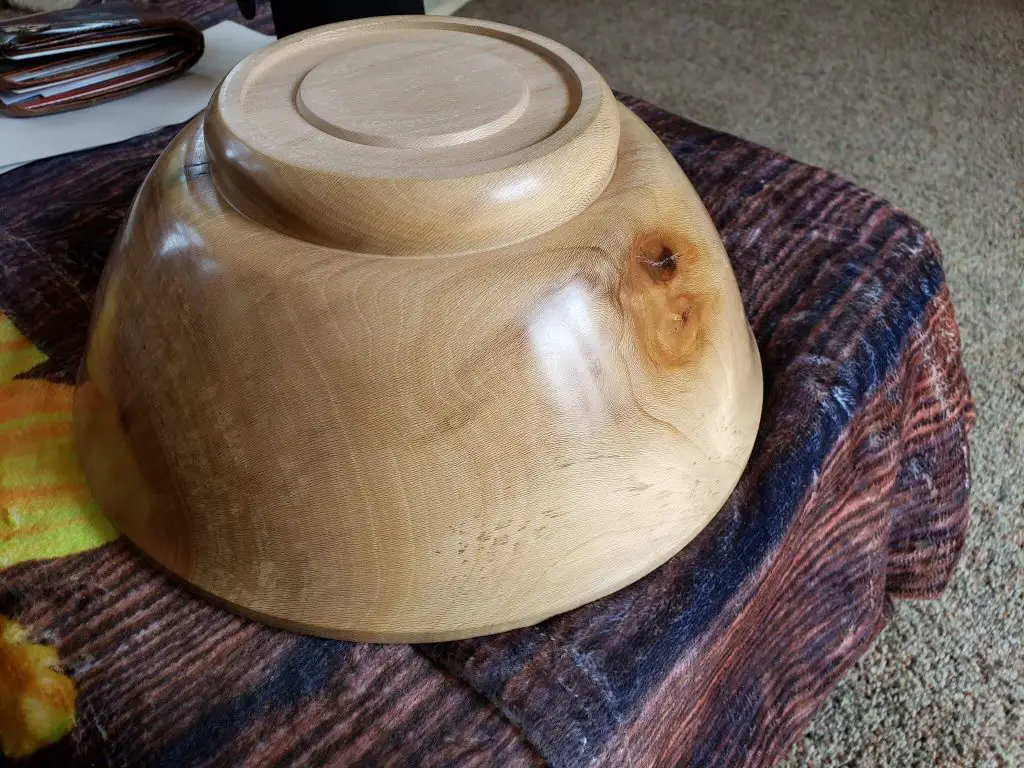
Sycamore only turns well when dry. Green sycamore is much harder to smooth and tends to disfigure when turned. This wood’s plain colour makes it suitable for creating surface decoration. Like beech, it does not impart smell or flavour and can be used for domestic items such as breadboards.
Sycamore has poor workability and is not ideal for someone just getting started on woodturning. Machining this wood is difficult because of its interlocked grains. Sycamore doesn’t stain well, too; the stain spreads unevenly, leaving the surface looking blotchy.
Holly
This beautiful wood has a milky colour and a very smooth texture. It is one of the hardwoods that turn well when fresh.
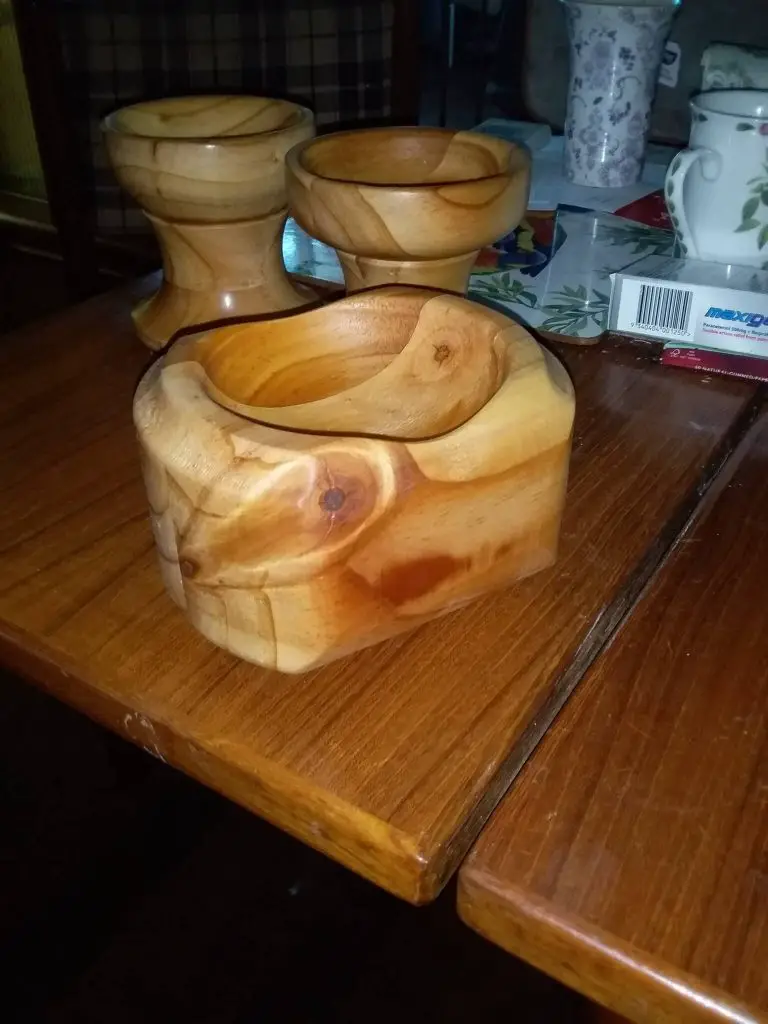
Holly is tough and dense. Unfortunately, it’s not resistant to insect infestation and decay-causing fungi. Holly has poor workability compared to other woods; its irregular grain pattern makes it difficult for you to see or plane the wood.
Holly is used for making brooms, tool handles, inlays, and decorative pieces for furniture.
Fruit Woods
Fruit woods such as apples and pears are excellent for turning projects. The apple wood, for instance, turns very well when wet. It has straight grains with a fine, even texture. Unfortunately, Applewood is not rot-resistant and has a high shrinkage rate. This wood has poor workability and tends to burn when machined. But it glues and finishes nicely.
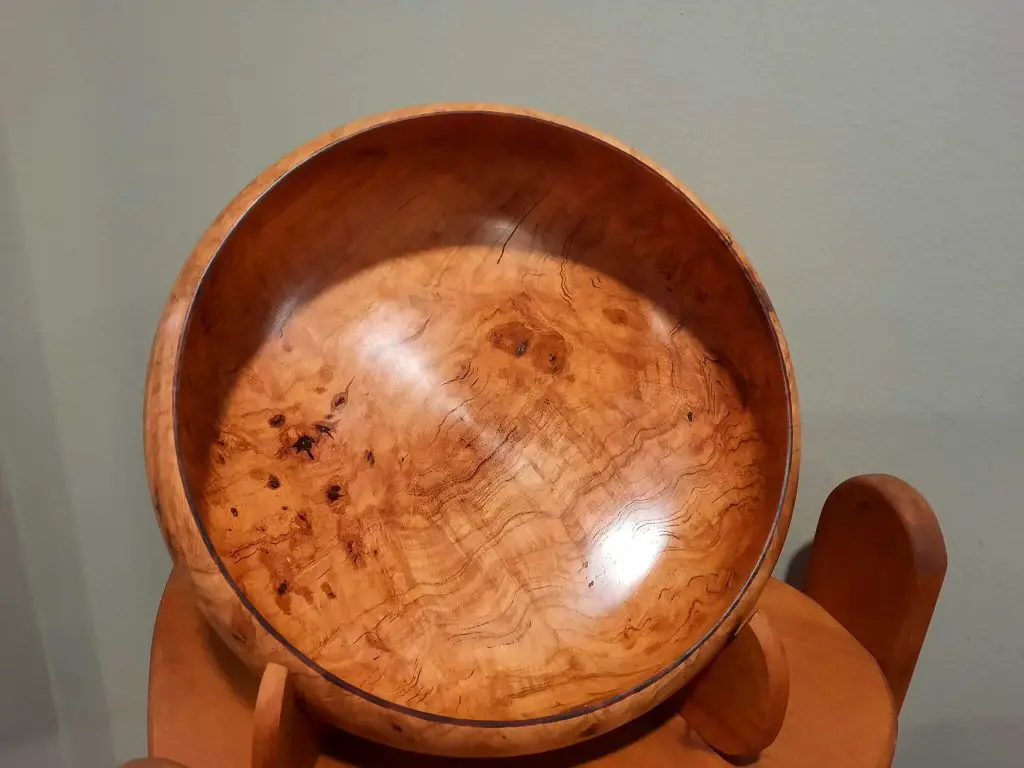
The pear turns well and has straight grains too. Like Applewood, pear is not rot-resistance. It has good workability with hand and machine tools. It also glues and finishes nicely.
These two fruitwoods are more stable when wet.
Yew
Yew is one of the most beautiful softwoods. It has close grains that turn very well. This wood is denser than that most softwoods. However, it is soft and tends to crack easily. It’s also prone to heat damage when machined.
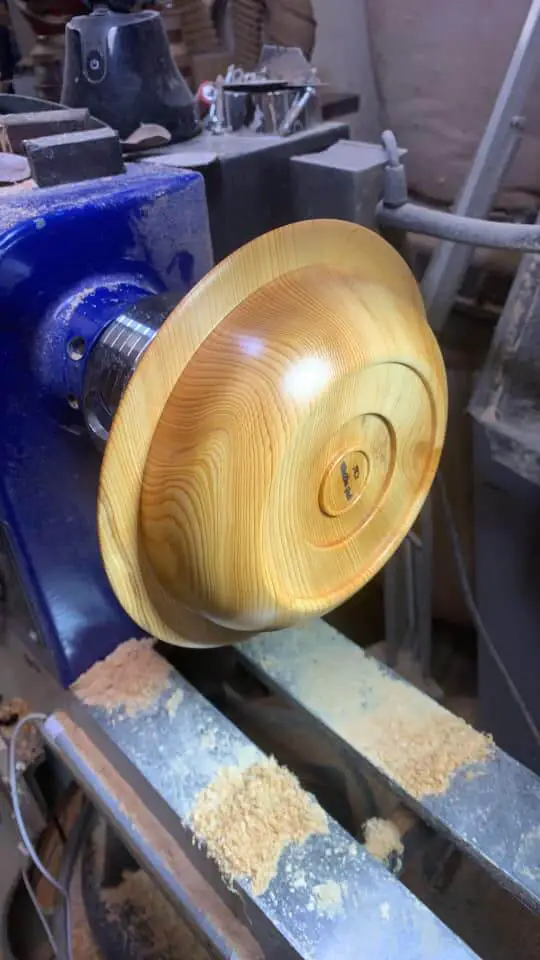
Its beauty makes it ideal for creating decorative spindle-turned items such as candlesticks, spinning wheels, and bud vases.
Yew is easy to work with, but you must ensure that the stock has no knots or grain irregularities.
Sourcing Wood for Turning
You can obtain wood from various sources, from your back gardens to a tropical rainforest in a far country. Wood comes in many forms, from logs to kiln-dried blanks.
When buying wood, most turners go for those expensive blanks with an attractive grain pattern and colour. The properties of such blanks can enhance the final turned piece and make it look more beautiful. However, if you’re starting on woodturning, consider using cheap wood.
You’re more likely to make a mistake at one point in your learning journey. And a mistake on an expensive piece may cost you a lot of money.
Seasoning Wood
Although one can use any wood species for turning, choosing stable wood is essential. Seasoning is the process of removing sap and water so that turned wood doesn’t shrink, warp, or have open joints.
If you’re dealing with large pieces of wood, you can stack them on the skids in the open air, allowing them to dry away from direct sunlight. It usually takes one year of drying time for every inch of thickness of the wood.
Kiln drying is another effective way of seasoning wood. However, most turners prefer making bowl blanks using greenwood and then allowing the blanks to dry and find their shape. Due to unequal shrinkage, cracks may start to appear on the blanks. Fortunately, you can prevent this by wrapping the piece in a few layers of newspaper to slow the drying process.
Conclusion
Any turning project’s success depends on the wood you use. You can either use dry or green wood for your project. Whether you choose softwoods or hardwoods for your project, ensure that the selected blanks have straight grains and are free from knots, splits, and checks.
Some of the best woods for turning include; African Blackwood, beech, ash, fruit woods, holly, cedar, Yew, sycamore, laburnum, and Sheoak, as well as Ipe.
You can season your wood by air-drying or kiln-drying it. Doing so prevents turned wood from shrinking, warping, or opening joints.
If you buy wood that’s already kiln-dried, ensure that it is completely sealed, so it doesn’t absorb moisture. If you’re new to turning, ensure to use cheap wood rather than expensive ones.

